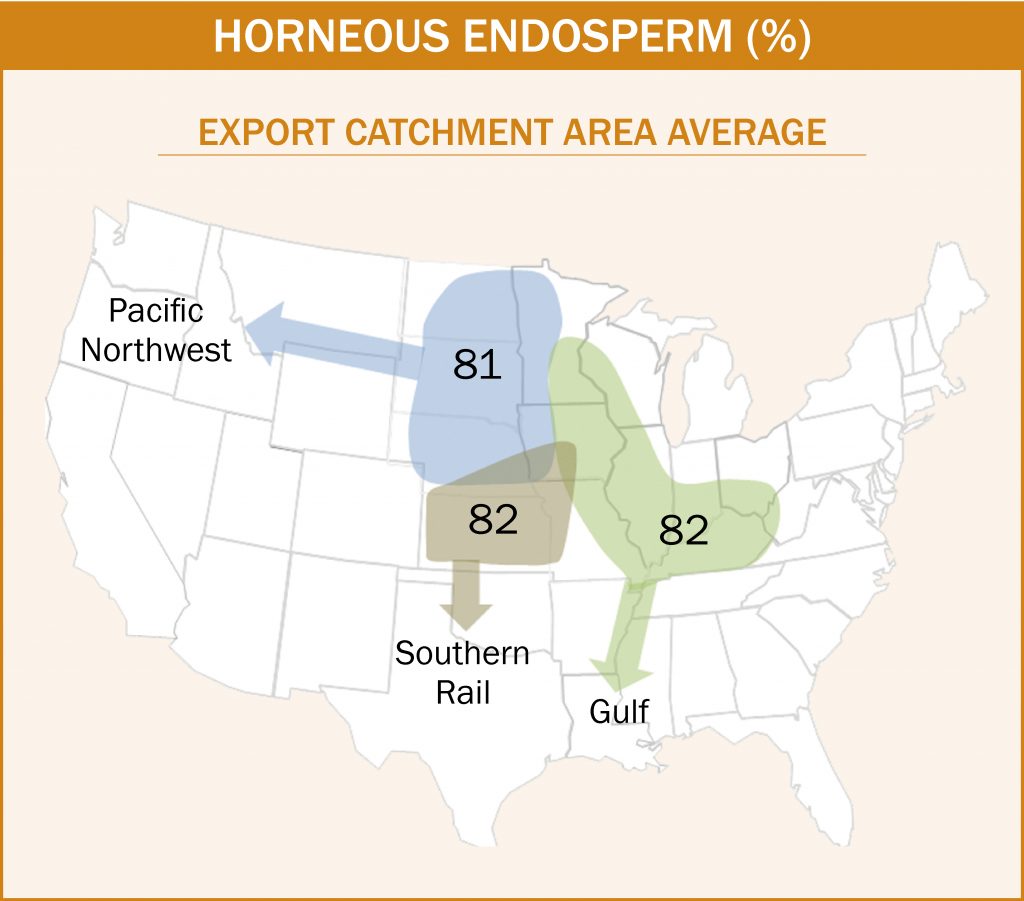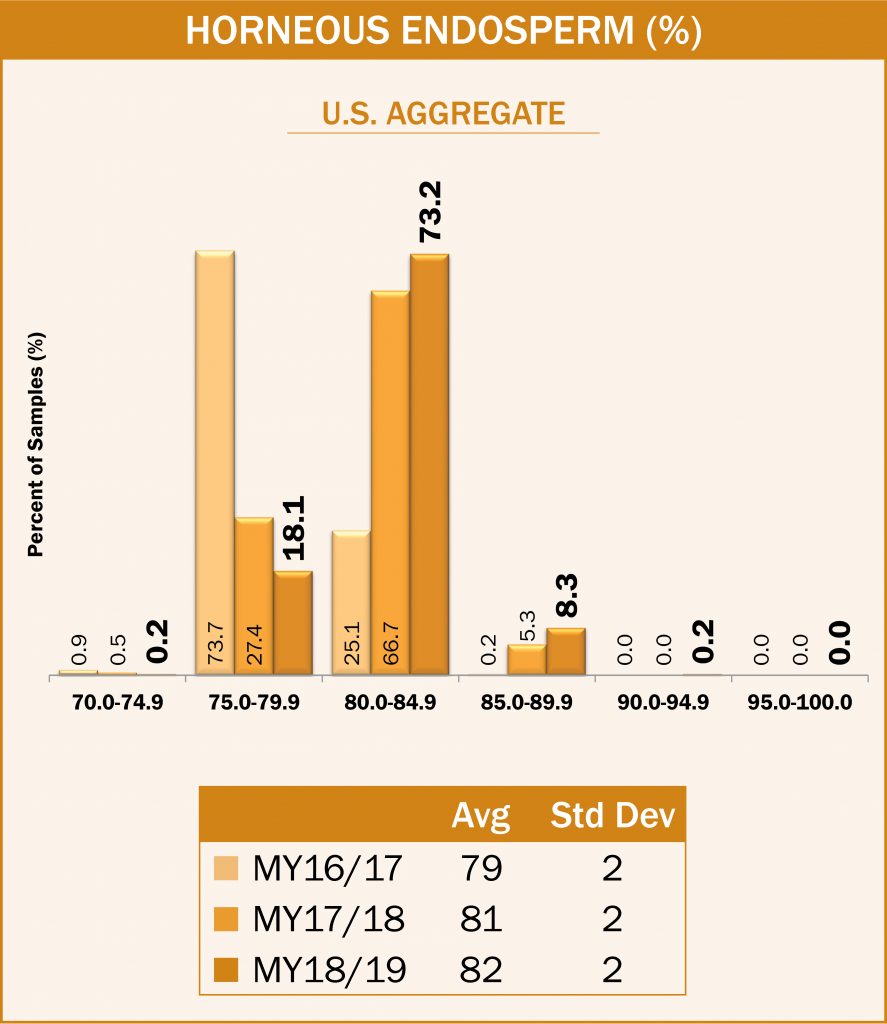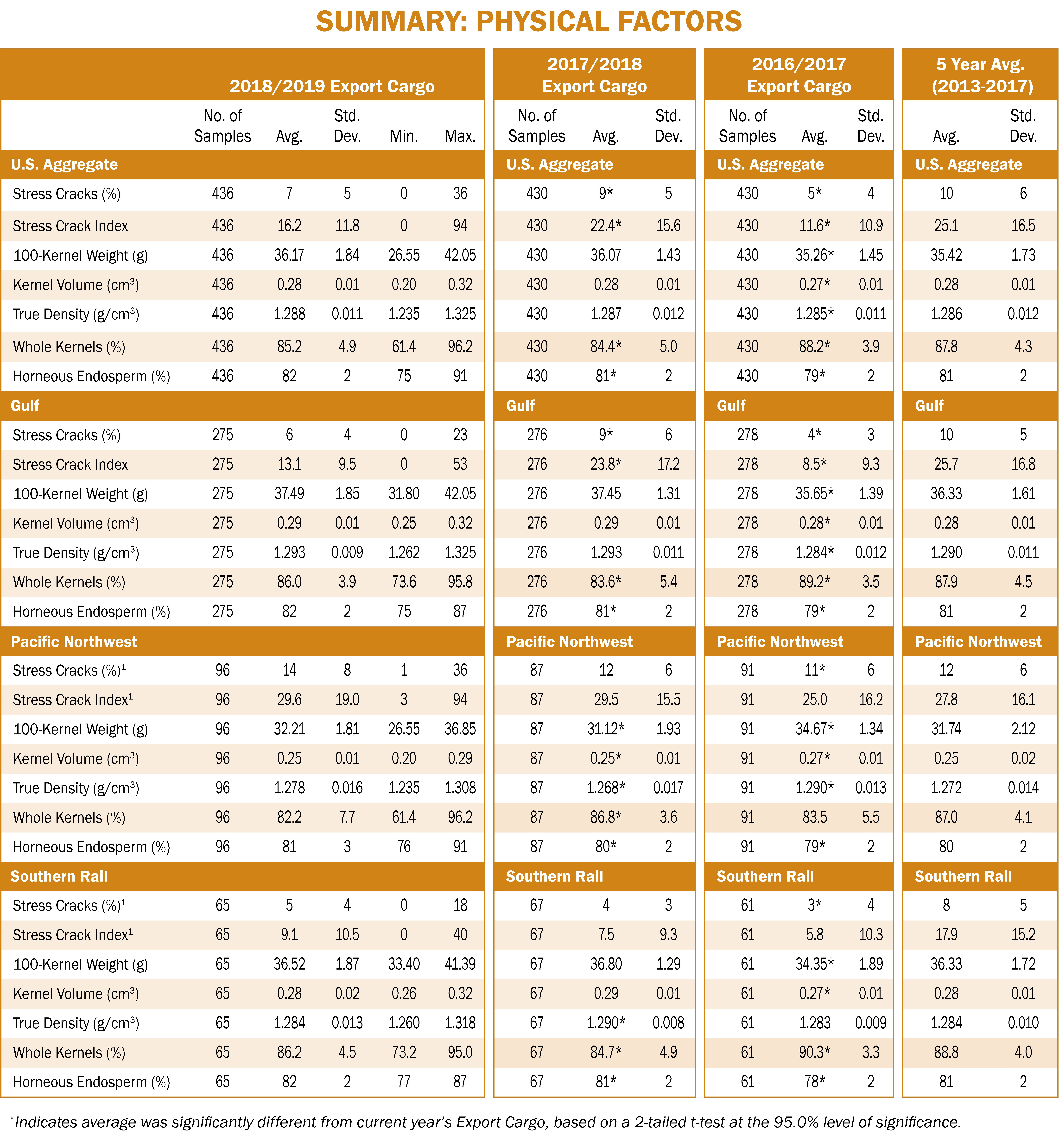Horneous (Hard) Endosperm
The horneous (hard) endosperm test measures the percent of horneous or hard endosperm out of the total endosperm in a kernel, with a potential value from 70 to 100%. The greater the amount of horneous endosperm relative to soft endosperm, the harder the corn kernel is said to be. The degree of hardness is important depending on the type of processing. A hard kernel is needed to produce high yields of large-flaking grits in dry milling. Hard to medium hardness is desired for alkaline cooking. Medium to soft hardness is used for wet milling and livestock feeding.
Hardness has been correlated to breakage susceptibility, feed utilization/efficiency and starch digestibility. As a test of overall hardness, there is no good or bad value for horneous endosperm; there is only a preference by different end-users for particular ranges. Many dry millers and alkaline cookers would like greater than 85% horneous endosperm, while wet millers and feeders would typically like values between 70% and 85%. However, there are certainly exceptions in user preference.

Results
- Average U.S. Aggregate horneous endosperm (82%) was higher than 2017/2018 (81%), 2016/2017 (79%) and the 5YA (81%).
- Average horneous endosperm for 2018/2019, 2017/2018, 2016/2017 and the 5YA were within ±1 percentage point of the average horneous endosperm for 2018, 2017, 2016 and the 5YA at harvest, respectively.
- The 2018/2019 export samples had more uniform percentages of horneous endosperm compared to the 2018 harvest samples as indicated by the lower standard deviation at export (2%) compared to that at harvest (3%). The export samples also had a narrower range (75 to 91%) compared to the harvest samples (72 to 92%). This same pattern of increased uniformity for the export samples compared with the harvest samples also occurred in 2017/2018, 2016/2017 and the 5YA.

- Average horneous endosperm among all ECAs was within 1 percentage point of each other for 2018/2019, 2017/2018, 2016/2017 and the 5YA, respectively. No ECA consistently has had higher or lower average horneous endosperm relative to the others across years.
- Of the 2018/2019 export samples, 81.7% had at least 80% horneous endosperm, in contrast to 72.0% in 2017/2018 and 25.3% in 2016/2017. This indicates a higher percentage of the samples in the last two years contained high amounts of horneous endosperm compared to 2016/2017.
- Average horneous endosperm for contracts loaded as U.S. No. 2 or better (82%) was the same as that for contracts loaded as U.S. No. 3 or better.


